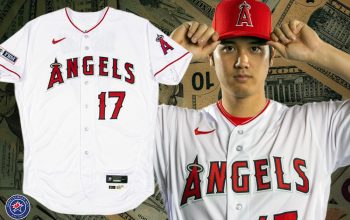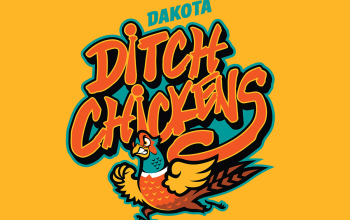
Larry MacPhail had seen enough.
Throughout the 1940 season, the Brooklyn Dodgers president felt his team was the target of “beanballs” from opposing pitchers – pitches thrown (sometimes with intent) to the head of hitters. Rookie shortstop Pee Wee Reese was hit in the head at Wrigley Field on June 1st; two weeks later, on June 18th, with Reese still missing time, recently acquired Dodgers outfielder Joe “Ducky” Medwick took one right off the noggin’. Medwick would have to sit out four days while recovering, and Reese missed three weeks.
This wasn’t a problem exclusive to the 1940 Dodgers; players often suffered severe injuries from pitches sailing too far inside. Detroit Tiger, and future Hall of Famer, Mickey Cochrane was nearly killed by a pitch in 1937. Cochrane would have to spend a week in the hospital and was forced to retire from the game following his doctor’s orders. A decade earlier, in 1920, Cleveland’s Ray Chapman was hit by a “spitball” thrown by Carl Mays of the New York Yankees; he died in the hospital approximately twelve hours later.

Following Chapman’s death, his Cleveland teammates experimented with but passed on using leather helmets created by baseball fan Charlie Horan during the Spring Training slate in 1921. Fourteen years earlier, New York Giants catcher Roger Bresnahan batted while wearing a leather helmet. Neither attempt caught on across the league; traditionalists squashed further efforts in the 1930s to mandate helmets.
MacPhail knew something had to change, he felt players, sportswriters, and fans resisted protection at home plate because the helmets were either uncomfortable or unsightly. He turned to the world of horse racing for inspiration, specifically, the jockeys and how they protected themselves against head injuries sustained when they fell from their horses – a small skull cap worn discreetly underneath their hats.
That Spring, Drs. George Bennett and Walter Dandy of Baltimore’s John Hopkins Hospital got to work. Starting with the jockey’s cap, they eliminated everything deemed unnecessary to reduce weight and bulk. At least twenty-five different models were tested, all of which included a plastic or fabric shield being placed inside a zippered pocket inside the ballcaps. Different shapes and sizes were tested to ensure the liner was light and comfortable enough not to affect their play and look good enough that players wouldn’t mind wearing them. Eventually, they settled on plastic shields moulded to fit the player’s head, adjusted to focus extra protection around each player’s temple.

Wearing a helmet at the plate was considered “soft,” “unmanly,” a sign that you feared the pitcher and couldn’t handle pitches thrown inside. Still, on March 8, 1941, for their exhibition contest against the Cleveland Indians in Havana, Cuba, Dodgers’ Reese and Medwick both wore the new protective plate under their caps while hitting
“You’d never notice you had it on,” Medwick said after the game. “There’s not enough difference in the weight or the feeling to bother anybody.”
“Every player in the Brooklyn organization [Major and Minor Leagues] will wear this protector,” MacPhail boldly proclaimed, “and I want to make a prediction that within a year, every player in the Major Leagues will be wearing one.”
On April 20, just a week into the 1941 regular season, Dodger Alex Kampouris was the first to benefit from the new, mandatory protection when he was hit in the head while running between bases in the 9th inning. The errant throw pinged off his plastic protector and bounced into the outfield, effectively breaking up an otherwise routine double play.

Things got a little more serious three days later when Pete Reiser was hit high on the cheekbone on April 23rd by Phillies pitcher Ike Pearson. The sidearm pitch was said to “sail” just as it reached the plate and hit Reiser, dropping the 22-year-old rookie outfielder unconscious. A stretcher was brought out to take him back to the clubhouse, where he woke up and was taken to a local hospital.
Dodgers physician Dr. D.A. McAteer examined Reiser and determined he suffered no skull or cheekbone fractures, only a bone bruise and a blood clot. Dr. McAteer said the cap “prevented a serious injury” despite three stitches of the ball still visible in Reiser’s cheek. The plastic cap shield was said to have absorbed much of the blow and resulted in Reiser missing just seven games rather than having his career (or worse, his life) ended prematurely.
The news of Reiser being saved by the protection in his cap changed attitudes throughout the league. Many prominent Washington Senators’ players requested and began wearing the new shields. A week later, the New York Giants began trying out three different types in batting practice before making them available (but not mandatory) for players during games in early May.
It would take another fifteen years before Major League Baseball made some form of head protection while at the plate mandatory. Both the American and National Leagues finally adopted the rule in 1956.

The proper batting helmets, more similar to those that we know throughout the game today, weren’t made mandatory until 1971, the thirtieth anniversary of MacPhail’s bold and lifesaving experiment.
In 2007, former Major League Baseball player Mike Coolbaugh was killed while coaching first base for the Texas League’s Tulsa Drillers. Coolbaugh focused on his baserunner at first base when a line drive struck him in the neck. The injury restricted blood flow to Coolbaugh’s brain resulting in a brain hemorrhage killing him within an hour of the impact. Baseball reacted by expanding its helmet mandate to both first and third base coaches; even though a helmet would not have prevented Coolbaugh’s injury, there was no need to take unnecessary chances.
Like hitters, pitchers experience substantial risk while on the mound due to line drives hit up the middle. Multiple times we’ve seen pitchers sustain very threatening injuries resulting from a batted ball catching them in the skull.

Again, like with hitters, development began on a protective headwear that would protect pitchers from these injuries. And just like in the 1930s, the solutions were met with reluctance due to three very familiar reasons — they were too large, negatively affecting their play, or they didn’t look all that great.
Pitcher Alex Torres gave the unusual-looking protective device a shot while on the mound during the 2016 season…
It did not catch on.











